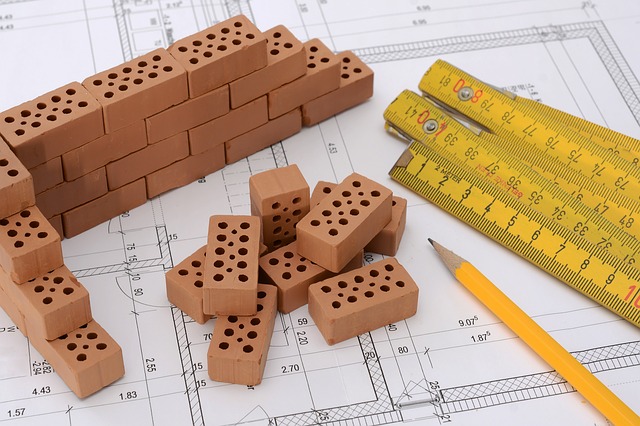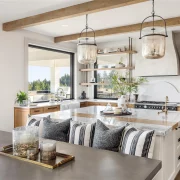In order to obtain the best rate of thermal insulation but also to build a home that is both solid and durable, you are logically wondering which are the best building materials to use. Our tips will help you determine, according to your case, the trade-offs to be made to consume as little energy as possible (including recycling), live in a comfortable house and reduce construction constraints as much as possible.
Building Materials: The Key Ones and Their Strengths and Limitations
Building Blocks or Bricks, Two Well-known Alternatives
Building blocks is one of the best known material: it is widely used for its low price, its reduced carbon footprint and its resistance (fire and frost, among others). Nevertheless, it must imperatively be used with an insulation worthy of the name, otherwise the building will not meet thermal requirements, knowing that the latter are particularly strict in the territory of Luxembourg.
You can also resort to the traditional hollow bricks or to monomur bricks. If the first ones need insulation, the second one are not efficient enough to be used alone.
“Building blocks is one of the best known material: it is widely used for its low price, its reduced carbon footprint and its resistance.”
Find our ads on:
More Ambitious Materials Involving Less Additional Insulation: Wood, Cellular Concrete
Wood also requires additional insulation, but it has the advantage of being easy and quick to implement (it needs no long periods of drying), just like metal structures.
However, if you target the best possible insulation from the moment the first external walls are laid, cellular concrete remains the most effective alternative. Very light, it is known for its excellent thermal conductivity, provided it is used for buildings up to two floors (not for villas, for example).
Whether you build a house made of wood, concrete or blocks, you always need to add a layer of insulation, which will be more or less thick depending on each particular case. For instance, with the wood which is rather efficient, the insulation is placed directly between the bearing posts, so walls do not need to be thicker than 40 cm. With less efficient materials, adding an insulation layer to the outer part of the building becomes necessary, then the walls can quickly reach 50 cm thick.
Which Partitions to Use Inside the House?
Once the exterior walls are erected, it is time to turn to the partitions inside the house. Here, the challenge is no longer linked to thermal insulation, but rather to well-being. People can choose fixed or removable, full or perforated alternatives, in order to create a space that fully adapts to their lifestyle.
Partitions for Wet Rooms
In order to prevent the humidity of the bathroom from spreading throughout the house, it is recommended to choose partitions with a high hygrometry for these sensitive areas.
Removable Partitions
Allowing to modulate your interior according to your desires and needs, removable partitions interest more and more individuals for their easy implementation and the freedom they offer.
“Removable partitions interest more and more individuals for their easy implementation and the freedom they offer.”
Dry Partitions
To permanently separate two rooms, you can build a drywall, which can be in plaster, brick or concrete. Some materials are specifically designed to target optimal sound insulation, for example.
Partitions Both Practical and Aesthetic
There exist many ways to separate spaces: some prefer to opt for glass partitions, which are perfect for bathrooms, but also smart to better circulate the natural light throughout the house. You can also resort to plants to create genuine green partitions, or to “thematic” partitions in specific atmospheres: in the Japanese style or in an artist studio one… Let your creative flair decide!
As you might have understood, the choice of materials for exterior walls and for interior partitions are of a completely different nature. Do not hesitate to resort to the advice of professional craftsmen to avoid mistakes!

